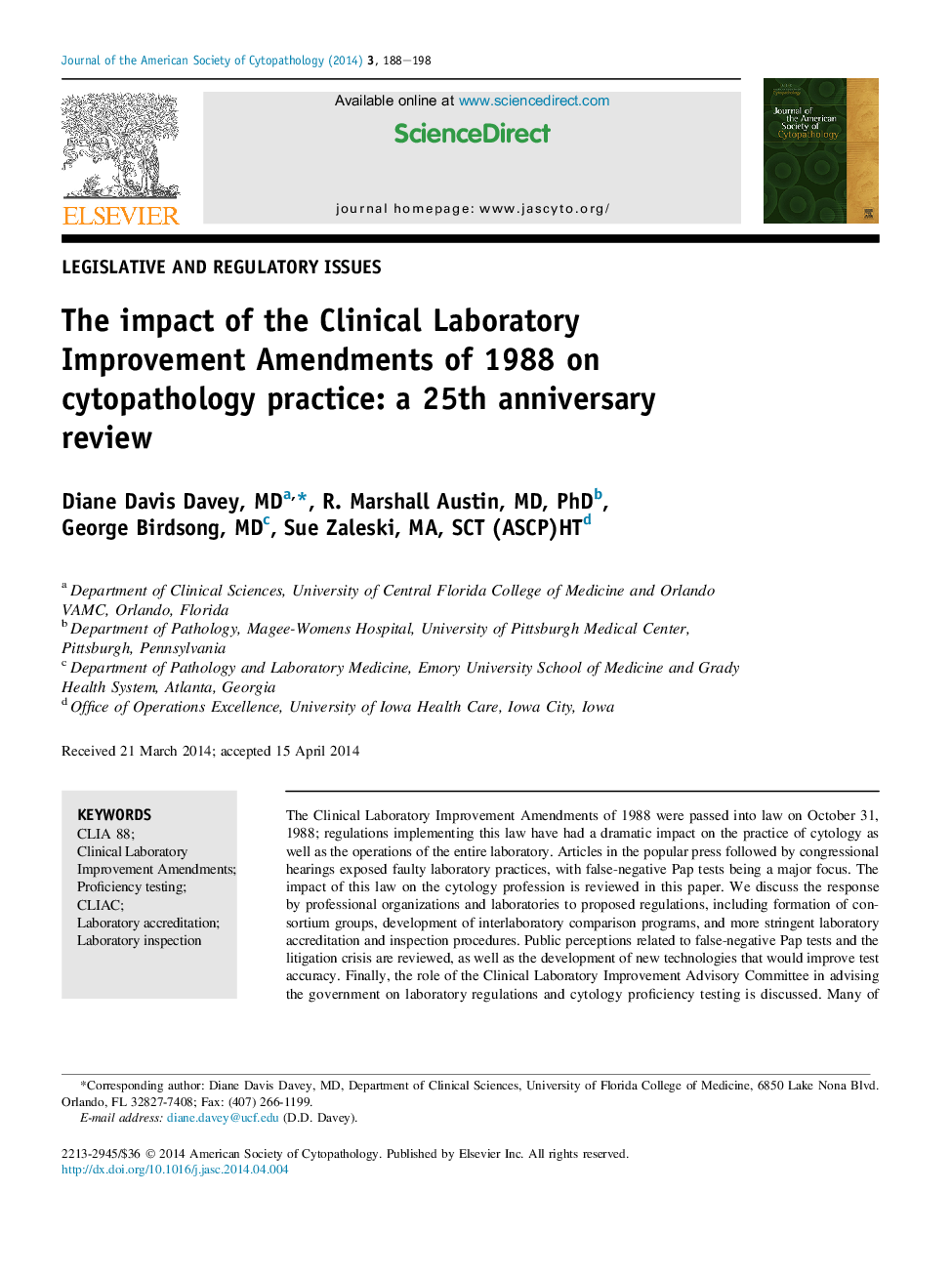| Article ID | Journal | Published Year | Pages | File Type |
|---|---|---|---|---|
| 2776288 | Journal of the American Society of Cytopathology | 2014 | 11 Pages |
The Clinical Laboratory Improvement Amendments of 1988 were passed into law on October 31, 1988; regulations implementing this law have had a dramatic impact on the practice of cytology as well as the operations of the entire laboratory. Articles in the popular press followed by congressional hearings exposed faulty laboratory practices, with false-negative Pap tests being a major focus. The impact of this law on the cytology profession is reviewed in this paper. We discuss the response by professional organizations and laboratories to proposed regulations, including formation of consortium groups, development of interlaboratory comparison programs, and more stringent laboratory accreditation and inspection procedures. Public perceptions related to false-negative Pap tests and the litigation crisis are reviewed, as well as the development of new technologies that would improve test accuracy. Finally, the role of the Clinical Laboratory Improvement Advisory Committee in advising the government on laboratory regulations and cytology proficiency testing is discussed. Many of the regulations have promoted quality practices and cytology accuracy, but others have proven relatively inflexible and may have blocked innovation.
